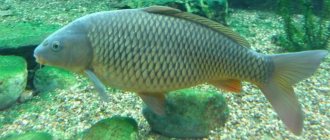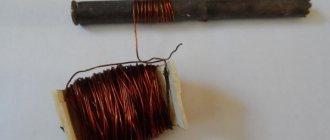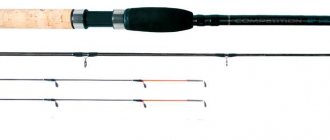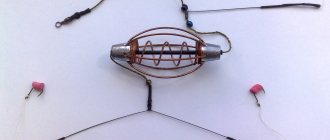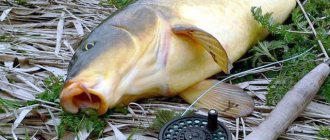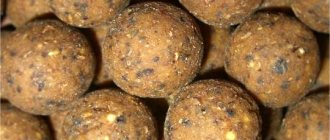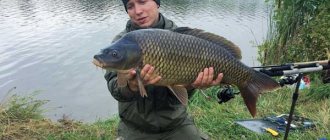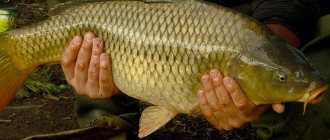When going carp fishing, fishing enthusiasts always hope to catch decent specimens. There is an opinion that over the years, carp not only reaches a respectable size and weight, but also becomes much more careful. It rarely approaches open areas of the reservoir, but prefers to live and feed near inaccessible shores, where the main part of the coastal zone is in thickets of bushes, reeds, and reeds. The water area of such places is deep and snarled. On natural and artificial lakes, large carp remain true to their habits: they prefer the edges of deep holes and water thickets. So how can you catch him? Today 34Fish.ru reveals the top 5 tips for successful carp fishing.
Bottom tackle
Bottom tackle is suitable for catching carp in any deep places of the reservoir, with changes in the bottom, in algae. The weight of the sinkers can reach 100 grams; on a muddy bottom, the lightest weights of 50-60 grams are suitable. It is better to use a fishing line with a diameter of 0.35 mm; braid is ideal for a leash. You should use blind equipment, which is designed for self-hatching of fish. If you are fishing for carp in places overgrown with aquatic vegetation and you need to detect a bite quickly, then immediately make a hook and immediately start landing the fish, a float rod is better suited.
We also recommend reading:
How to choose the right feeder for carp fishing Secrets of carp fishing Places for carp fishing Carp leashes
Boat fishing technique
The task of the fisherman, who knows the promising sites for the predator, and who has prepared his gear, is to provoke the fish to attack the bait. You can provoke it using special spinning bait wiring.
Here are the basic techniques for fishing from a boat:
- When fishing for predators in standing waters, the spinning angler’s task is to lure fish out of their ambushes: coastal thickets, water lilies. To do this, the bait is placed along a wall of plants in various ways: uniform, with pauses, twitching, jig.
- For catching predators on the river, the main wiring is a jig. Only this method can catch deep holes where living creatures are hidden.
- When catching peaceful fish using feeder gear, the main point is feeding. This needs to be done often, and casts should be made to the same place. The consistency of the bait should be such that the contents of the feeder are washed out within approximately 10 minutes.
Rod
The rod can be of any length (long-distance casts are not provided for this kind of fishing), have sufficient rigidity and a test of 150 g. Since you have to watch and manage several tackles at the same time, it is worth equipping the boat with holders for rods. The coil can be used inertial type "Nevskaya". When choosing the length of the fishing line, you should take into account the strength and assertiveness of the carp, which sometimes goes very far with the hook and can wear out the entire fishing line and break it. Therefore, the reel should have 100 or more meters of strong and inconspicuous fishing line in the water.
Tactics
The tactics themselves are simple, no complications, but there are subtleties that you need to know. The main thing is to never fuss when fishing from a boat, be it carp or any other fish. If you try to hook a fish ahead of time, it will fall off the hook, then there is a high probability that such an oversight will scare away all the fish in the area, you can swim to the shore. Hook only after a strong pull, do not rush.
Are you sure that the carp is firmly on the hook? Then the subtle process of playing begins. There should be no mistakes, the reasons are still the same, the noise will scare everyone away. The main thing is, don’t pull with all your might, don’t yank the line, because... Not only will the production be lost, but most likely there will be a cliff. It’s worth bringing in gradually, without pulling the tackle up, but it’s absolutely not recommended to let the carp catch its breath or try to jump off the hook. Everything is done gradually, carefully, but continuously.
If everything went as planned, you led the fish to the right place, then pick up the landing net. It is unacceptable to get a carp, and especially a trophy one, by pulling it into a boat on a fishing line. We act in the same way as fishing, with feeling, with sense, arrangement, keep a cool head. Get him there slowly, from the head. That's all, the “fish” is on board, congratulations!
In conclusion, some advice that goes from father to son, from generation to generation.
- Catching carp from a boat while the sun is shining;
- To stop the fish from fluttering, close your eyes, this will calm him down;
- Sometimes throw food around the boat and even cast it further away;
- Sliding mounts are not effective on a boat;
- Fishing from watercraft is most productive in the morning.
Nozzle
As a bait, it is better to use boilies or corn on the hair, and for short casts you need to deliver the bait exactly to the baited place. You can bait carp with boiled pearl barley, steamed wheat, peas, dough, and boiled potatoes. It’s a good idea to add boilies (ground to dust or whole) with the bait, which creates a trail of aromatic odor that attracts carp. When it appears in feeding areas and is interested in the bait, air bubbles form on the surface of the water.
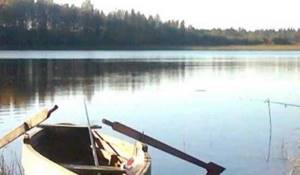
Where and when do you catch carp on a float rod?
You can fish all summer and part of autumn. Carp loves heated, warm water, so if spring and early summer were cold, it’s worth waiting. The fisherman is forced to catch carp with a float either by the heavily silted bottom of the reservoir (in this case, the feeder, bottom tackle falls into deep silt), or by the interest in this particular method of fishing, because according to many amateur fishermen, catching carp with a fishing rod is a more exciting process than for bottom gear.
Usually large fish stay at depth during the day and only after sunset come closer to the shore. This is taken into account when choosing gear and feeding.
Equipping a float rod for carp
Rod
To properly assemble a fishing rod for carp fishing, the rod is selected depending on the fishing location and casting distance. For coastal fishing, a regular fly rod is suitable; for longer casting, a match or plug rod is preferable.
Read: What should a fly rod be like?

To catch carp over 2-3 kilograms, experienced fishermen advise using match rods, durable, with an elastic top and mandatory guide rings.
Read: Secrets of fishing with a match rod
The rings are needed so that the load of large fish is distributed evenly on the rod. When fishing from the shore, the length of the fishing rod should be no more than 7 meters, otherwise it will be inconvenient to land the fish. To catch carp in the summer from a boat, a rod 5 meters long is sufficient.
Reel and line
It is better to use a small, inertia-free reel with a sensitive friction brake, because equipment with a friction brake will reduce the pressure on the line when fishing.
Read: Everything you didn’t know about the clutch
Because of its visibility, it is impossible to use a thick fishing line to catch this cautious fish. The same applies to braid, so it is better to use high-quality, well-stretching fishing lines or monofilament with a diameter of no more than 0.35. A little trick when fishing for carp - in addition to the main line, use a leash made of low-visibility fluorocarbon fishing line, this increases the chances of a bite.
Float, sinkers and hooks
The float tackle for carp is standard - a regular float with a carrying capacity of 3-5 grams, dim, with an informative, long antenna. You can try the option of equipping it with a sliding float, in this case the fish does not feel resistance, which has a positive effect on the bite. Which floats are best for carp fishing for you personally should be decided based on your own observations and experience.
Read: How to learn to fish with a sliding float?

Sinkers should also be inconspicuous to the fish - a small pellet near the hook, while the main weight is higher towards the float. The hook should be small, completely hidden under the bait so as not to scare the fish, but at the same time very durable. Forged hooks No. 2−8 are often used, with a short shank and a not too wide hook width to avoid unbending.
Subtleties of hooking
The carp bite varies; if it is very hungry, it swallows the bait instantly and drowns the float. If the carp is full, then, on the contrary, it carefully tastes the bait, savors it, and then may spit it out altogether. Therefore, any movement of the float, even the slightest, its immersion in water should be regarded as a bite. The hook should be slow and sweeping, using the tip of the rod. A hooked large carp tries with all its might to escape the cage, trying to free itself, it tears the fishing line with great force, breaks and breaks off the hooks. However, with skillful and patient fishing on strong tackle, large carp still become the fisherman’s prey.
Feeder tackle
Fishing for carp with a feeder is very popular today, because this tool guarantees a catch even in bad weather. For fishing to be successful, you need to assemble the following set of carp tackle:

Rod. The optimal length of the form is 3-3.6 meters. It is harder for shorter ones to throw feeders over long distances. It is better to give preference to a rod with a medium action, since rigid models do not absorb sharp blows from carp during fishing. The recommended test is 90-150 g. Medium and heavy feeders usually have these characteristics.- Coil. Feeder carp fishing involves long casts and even bringing in equipment on a boat, as well as serious resistance when fishing. Sometimes a fish struggling for life with a weakened clutch will reel in fifty or more meters of fishing line. This means that for successful fishing you need a powerful spinning spool, the spool of which can hold at least 150 meters of thread with a cross-section of 0.35-0.4 mm. According to the Shimano classification, such “meat grinders” have a spool size of 5000 or 6000. In addition, the reel must be equipped with a baitrunner. This device allows you to avoid the rod being torn off the stand if the angler for some reason does not respond to the bite in time.
- Fishing line. In this gear it is better to use monofilament. The inextensibility of the braid is irrelevant in this type of fishing, since there will definitely not be any careful bites with a barely noticeable movement of the quiver tip. But elastic nylon will be beneficial - it will smooth out the jerking of the carp.
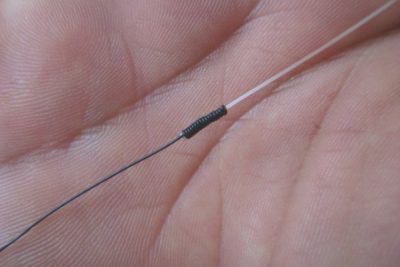
Shock leader. In feeder carp fishing, the presence of a shock leader is mandatory. At the very end of fishing, when the fish feels the shore approaching and increases resistance, it will take on the main load.
- Hook. A very important element of equipment, on which the final result largely depends. It must be made of strong, thick wire and well sharpened. The size and shape are selected taking into account the bait used.
- Sinker. Necessary in some cases.
- Feeder. Feeders of different shapes, open and closed, are used. The choice primarily depends on the fishing conditions.
Baits and baits
Carp has a number of baits that it prefers. Moreover, at different times of the year they can be different. In the spring, he does not refuse either animal or plant baits. During the summer sun, he prefers baits of plant origin, but in the fall, in order to stock up on nutrients for the winter, he prefers baits of animal origin.
In spring and summer
In spring and summer you can catch carp:
- For corn (sweet).
- For peas (canned green).
- For bread.
- On the dough.
- For pearl barley.
- On a worm.
- On the bloodworm.
It is possible to use various fruit flavors, but only in small doses, and in hot weather it is better to avoid them altogether.
In autumn
In autumn, carp do not show much activity, but they can be successfully caught:
- For a worm (live or chopped).
- For maggots.
- For a large bloodworm.
- For larvae of various insects.
Catching carp with boilies
Boilies are considered one of the most catchy baits for catching trophy carp. These are round balls that are made from a mixture of different types of flour, eggs, starch and the addition of flavorings. In stores you can find a very large selection of these attachments, but they are often made at home. In addition to the fact that boilies come in floating and sinking types, of different sizes, they also differ in color and smell:
- The most catchy ones are boilies of yellow, red, white and purple colors. The choice of color depends on the degree of transparency of the water and the condition of the bottom of the reservoir. Bright colors work better in turbid water, and dark ones on a light bottom.
- But the smell of the boilies is more important than their color. The most catchy smells in the summer: vanilla, strawberry, various fruit aromas, caramel, garlic, hemp. In autumn and spring, boilies with animal scents, such as the scent of a worm, work well.
Victoria Leshchenko
I've been working hard in the fishing tackle department for the past six years. I can help you assemble almost any gear.
Ask a Question
Boilies are used both as bait and groundbait. To cut off bites from small fish, the size of the bait must be more than 1 cm. When fishing with these baits, a rig with a hair rig is most often used.
How to catch carp with a float rod
Do I need bait?
Experienced carp fishermen claim that complementary feeding is necessary. There would be two types of bait: frequent, small portions and fractions (for example, a little corn or pearl barley), or one-time heavy feeding with large balls of a viscous mixture. One of the features of catching carp with a float rod is that the bait includes pieces of a large fraction, necessarily the one we are fishing for (for example, corn), and it is advisable to feed it in several places at once. If, during noisy fishing, the fish leaves the feeding area, we move to the reserve one.
Read: Preparing bait for carp
Best attachments
The baits to be used for fishing are selected depending on the time of year and the reservoir. In spring, carp bite on animal baits (for example, worms, bloodworms, maggots), while in summer they often prefer products of plant origin (usually peas, boiled potatoes or corn). Sometimes it’s good to try a “sandwich” bait for carp, when both corn kernels and a worm are put on the hook.
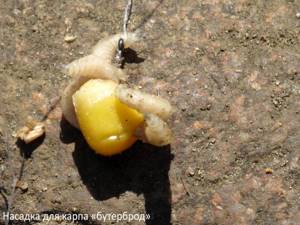
If there is no bite on the traditional food for this reservoir, the carp may become interested in exotic tastes and smells. Sometimes fish can be attracted to bait that smells like strawberries or bananas, so it is advisable to try different options, or even fish with several rods.
Fishing technique with a float rod
After casting, it can take up to an hour until the bite occurs. You need to be patient, because carp fishing using a tackle with a float requires perseverance and careful attention. The bite would be both sharp and energetic, and also barely noticeable - small twitches of the float and moving to the side, it happens that the fish puts it on its side.
To catch a trophy carp after hooking, it is important not to give the line slack, and by extinguishing jerks with the help of the rod and clutch, tire the fish. When fishing, try not to let it go into the reeds or snags and always have a landing net with a long handle ready. You should take a large carp into the landing net from the head.
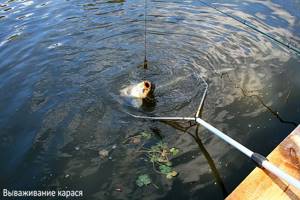
Conclusion
We hope that our tips will help you in such a difficult but exciting activity as catching carp with a float rod. Remember that sometimes unconventional methods also bear fruit. Therefore, do not be afraid to experiment and try new things, because experienced fishermen claim that large carp are not only very careful fish, but also curious...
